Milestones of the Masa Group
Alois Smaritschnik, founder of the company and name giver of Masa, would have never imagined that the blue and yellow Masa machines are supplied to customers around the world.
Masa History
-
1905 - 1940: The early years
1905
On August 14th, 1905 Alois Smaritschnik established a smith and locksmith operation in Andernach. In addition, the business repairs machinery and begins to manufacture individual machines for the emerging industry surrounding the Andernach area.
1930s
The company grows from a craft business into a booming machine factory after Mr. Smaritschnik’s three sons join the company.
The machine factory mainly produces lifting devices and conveying systems, including gantry cranes and specialized lifting devices.
At this time Masa starts producing hand moulds and vibration tables for the local pumice industry. -
1940 - 1960: New beginning after World War II
1945
After the end of World War II, the Allied Forces confiscate the company for the purposes of the rebuilding and maintenance of the Rhine fleet.
After the confiscation, the Allied Forces retain 70% of the company as a part of the reparation.
1956
Peter Alois Smaritschnik dies unexpectedly at the beginning of 1956. His wife Else Smaritschnik takes over the company.
1948
With the introduction of the currency reform, two of the founder’s sons leave the company. The remaining son and engineer, Peter Alois Smaritschnik takes over the family business.
The combination of the abundant pumice resource found in the area surrounding Andernach and the enormous demand for building materials for postwar building creates a need for machines to provide to these growth industries. -
1960 - 1980: Entering the global market
1960
At the beginning of the 1960’s Masa expands its supply of machines to a world-wide basis. International representatives expand Global marketing efforts.
1964
Peter Josef Smaritschnik, son of Peter Alois and Else becomes the first shareholder of Masa in its transformation into a limited partnership company.
1965
The industry begins shifting from manual to automated technology. Masa leads the industry in this industrial evolution.
1972
Masa develops the first electric control world-wide for block making machines and plants.
1978
Masa supplies the first block making machine using big pallets to the American and Middle East markets.
-
1980 - 2000: Product expansion and strengthening of Masa's market position
1980
In the 1980’s through the late 1990’s, Masa gains additional market shares world-wide. This growth is especially strong in the USA and Middle East markets. Exports of machines and complete plants grow substantially.
1982
In 1982 Peter Josef Smaritschnik passes away. His wife Olga Smaritschnik, who today is Olga Vercammen becomes the new owner of Masa and continues to run the business.
1993
The relocation from its previous near the Andernach harbor to its current address of Masa-Str. 2 is completed in October, 1993. With the expansion of facilities and the extended production capacity, Masa is prepared for the future.
1995
The increased expansion and internationality of the company’s business leads to the change to an incorporated company.
1999
Masa purchases the famous Henke Maschinenfabrik in Porta Westfalica. This greatly expands the market position and product range which now includes: block production, slab production, sand-lime brick production, and autoclaved aerated concrete block production.
-
2000 - 2010: Expansion and establishing subsidiaries worldwide
2000
In the 2000's, and continuing today, Masa grows worldwide and establishes subsidiaries in the USA, China, Russia, India and in the UAE.
In 2000, Masa and Masa-Henke jointly developed the new "Record 9001 XL" block machine with the best characteristics in terms of height control, productivity and efficiency, based on their many years of experience and expertise from the two renowned brand machines "Record" and "Variant".
2001
Founding of "Masa-USA" with 50 % of foreign participation
Setting up the establishment "Masa Middle East FZCO" in Dubai (UAE) with 30 % foreign participation.
2002
The 2002 acquisition of the market leader Dorstener Maschinenfabrik strengthens further the company’s market position in the field of sand lime brick production and adds further know-how with regard to autoclaved aerated concrete block production.
Setting up of a representative office in Moscow.
2003
Founding of the "Masa Building Material Machinery Co. Ltd." in Tianjin, China.
2006
Founding of the "Masa Concrete Plants India Private Limited" in Bangalore, India.
2008
"Masa-USA" becomes a 100 % subsidiary of Masa AG.
2009
"Masa-Middle East FZCO" becomes a 90 % subsidiary of Masa AG.
-
2010 - 2025: Continuous development of Masa Group
2010
The change of legal form from Masa AG to Masa GmbH in 2010 creates a uniform brand image for the entire Masa Group.
2014
The industry participation fund CGS III becomes a majority owner of the Masa Group. The previous majority shareholder remains involved in the company. There is a continuous future assured for the development of the Masa Group.
2016
Masa and its subsidiaries are based in several locations arround the globe.

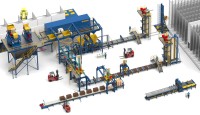 It's a long way from raw materials through the mixture to the finished stone. Many plant components are involved in this process. Only if the system components are matched, can one be assured of a smooth process and economical operation of the block and paver making plant.
It's a long way from raw materials through the mixture to the finished stone. Many plant components are involved in this process. Only if the system components are matched, can one be assured of a smooth process and economical operation of the block and paver making plant.
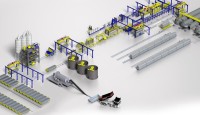 The manufacturing of autoclaved aerated concrete products demands high standards for mixing and dosing of the aggregates, the control of the fermentation process and the control of each production step. Masa's aerated concrete installations are proven advanced technology processes, designed according to customers specific requirements. This approach allows complete solutions to ensure highly efficient, optimised processes resulting in consistent final product quality.
The manufacturing of autoclaved aerated concrete products demands high standards for mixing and dosing of the aggregates, the control of the fermentation process and the control of each production step. Masa's aerated concrete installations are proven advanced technology processes, designed according to customers specific requirements. This approach allows complete solutions to ensure highly efficient, optimised processes resulting in consistent final product quality.
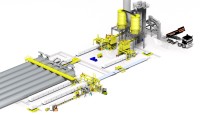 It's a long way from raw materials through the mixture to the finished sand lime bricks. Many plant components are involved in this process. Only if the system components are matched, can one be assured of a smooth process and economical operation of the sand lime brick production plant.
It's a long way from raw materials through the mixture to the finished sand lime bricks. Many plant components are involved in this process. Only if the system components are matched, can one be assured of a smooth process and economical operation of the sand lime brick production plant.
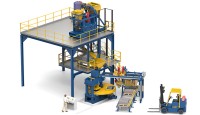 It's a long way from raw materials over mixture to the finished (Kerb)stone. Masa Kerbstone presses were developed to fulfill among other criteria, the special requirements of the "British Standard" kerbstones. This "British Standard" is still a condition in countries of the Middle East and the UK.
It's a long way from raw materials over mixture to the finished (Kerb)stone. Masa Kerbstone presses were developed to fulfill among other criteria, the special requirements of the "British Standard" kerbstones. This "British Standard" is still a condition in countries of the Middle East and the UK.
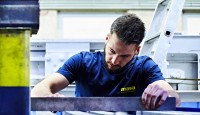 Masa plants and machines are installed and commissioned by our own experienced fitters. Masa relies on qualified personnel, trained in Germany.
Masa plants and machines are installed and commissioned by our own experienced fitters. Masa relies on qualified personnel, trained in Germany.
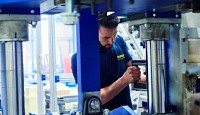 The Masa Lifetime service extends far beyond the actual assembly and commissioning of a plant. Masa can rely on specific know-how and an industry experience of more than 110 years.
The Masa Lifetime service extends far beyond the actual assembly and commissioning of a plant. Masa can rely on specific know-how and an industry experience of more than 110 years.
 Do you need support with your machine? Masa Support scores in both quality and significantly improved accessibility. Whether "first aid" for technical problems, updates, functional expansions of your production plant or technical questions, the know-how provided by Masa Support covers a wide range of services.
Do you need support with your machine? Masa Support scores in both quality and significantly improved accessibility. Whether "first aid" for technical problems, updates, functional expansions of your production plant or technical questions, the know-how provided by Masa Support covers a wide range of services.
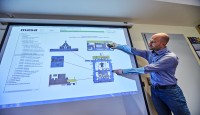 One of the keys to increasing productivity and quality is continuous training of the machine and maintenance personnel.
One of the keys to increasing productivity and quality is continuous training of the machine and maintenance personnel.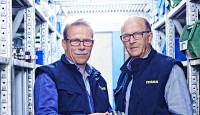 Are you looking for your contact? The Masa Service team introduces itself.
Are you looking for your contact? The Masa Service team introduces itself.
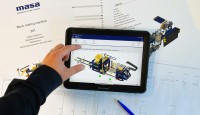 The Masa Service Cloud is the latest product in the family of digital products.
The Masa Service Cloud is the latest product in the family of digital products.